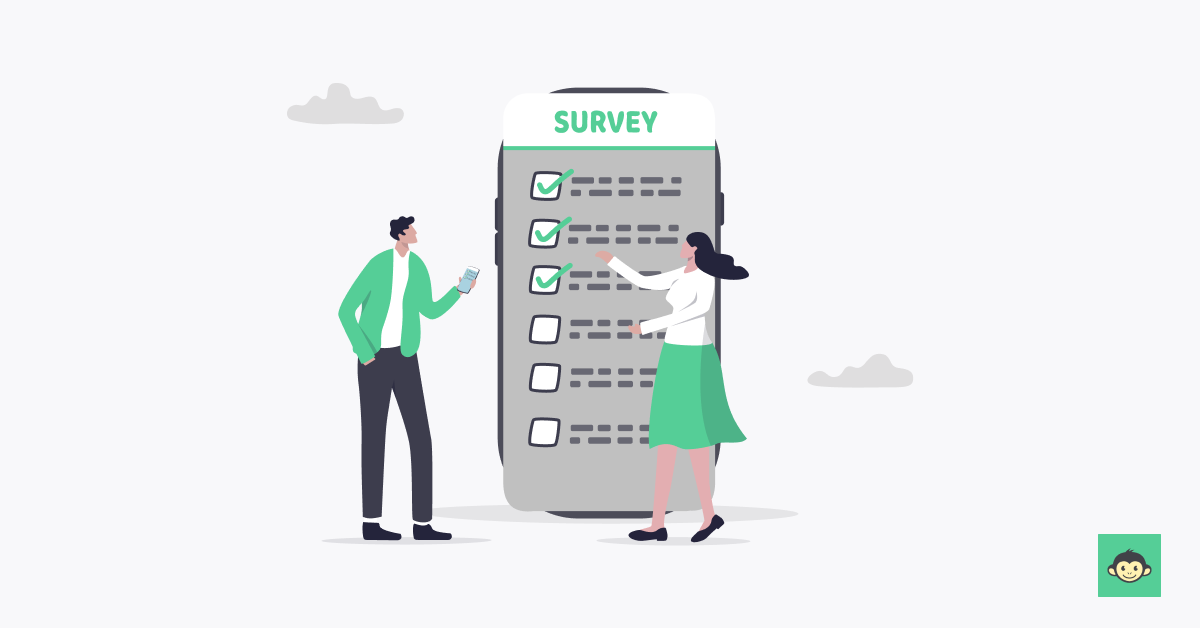Pulse survey vs engagement survey

Think of visiting the doctor. Your annual check-up gives a complete overview—blood work, vital signs, lifestyle advice. But those quick check-ins, like a blood pressure reading or step on the scale, help you track how you’re doing between appointments. One without the other leaves blind spots.
Employee feedback works the same way. Engagement surveys act like the full examination, uncovering deeper patterns about culture, satisfaction, and retention. Pulse surveys, meanwhile, are those smaller but more frequent readings that alert you to changes in real time.
Together, they keep your workplace healthy, resilient, and ready to thrive over the long term.
TL;DR
What are pulse surveys?

Pulse surveys are short, focused questionnaires designed to quickly capture how employees feel in the moment. Unlike lengthy annual engagement surveys, they zero in on specific topics such as team dynamics, leadership communication, or recent organizational changes. Because they take only a few minutes to complete, they encourage higher participation and deliver fast, actionable insights.
Think of them as regular check-ins—like taking a snapshot rather than producing a full photo album. Their purpose is to track shifts in sentiment over time, spot potential issues early, and help leaders respond before challenges escalate. For example, after rolling out a new policy, a pulse survey can instantly show how employees are adapting and where extra support might be needed.
The key advantage is agility. Pulse surveys give organizations real-time data to make timely, evidence-based decisions, ensuring the workforce feels heard and valued while keeping engagement strategies responsive to changing needs.
What are employee engagement surveys?

Employee engagement surveys are structured questionnaires designed to measure how motivated, connected, and committed employees feel toward their work and the organization. They go beyond surface-level satisfaction, uncovering deeper insights into what truly drives enthusiasm, productivity, and retention. Typically conducted annually or bi-annually, they provide leaders with a comprehensive overview of workforce sentiment.
Think of them as a thermometer for workplace culture—gauging not just morale, but also how well employees align with company values, leadership, and goals. These surveys often explore themes like career growth, recognition, communication, work-life balance, and overall employee satisfaction.The real value lies in the patterns they reveal.
Engagement surveys highlight both strengths and blind spots, helping organizations identify what keeps people inspired and what needs improvement. By acting on these insights, leaders can design better initiatives, improve retention, and build a thriving culture where employees feel valued and motivated to contribute their best.
What is the difference between engagement and pulse surveys?

Engagement surveys and pulse surveys are both vital, but they differ in scope, timing, and purpose. Here’s a clear side-by-side breakdown:
| Aspect | Engagement Surveys | Pulse Surveys |
|---|---|---|
| Scope | Broad, covering culture, satisfaction, growth, and alignment. | Narrow, focused on recent initiatives or specific themes. |
| Survey frequency | Annual or bi-annual. | Frequent—weekly, monthly, or quarterly. |
| Depth of Insights | Comprehensive and analytical. | Snapshot-style, quick reads. |
| Time Commitment | Longer (20–50 questions). | Short (5–15 questions). |
| Purpose | Strategic planning and long-term benchmarks. | Agile feedback for immediate action. |
| Employee Effort | Higher, more detailed responses. | Minimal, designed for speed. |
| Management Use | Tracks trends, informs cultural initiatives. | Detects emerging issues early. |
| Analysis Style | Requires deep data review and segmentation. | Easier, often visualized in real time. |
| Impact Timeline | Drives long-term organizational change. | Enables quick course corrections. |
| Best Fit For | Setting strategy, evaluating overall engagement health. | Continuous listening, maintaining daily/weekly alignment. |
Benefits of pulse surveys

Pulse surveys have become an essential part of modern feedback strategies because they combine speed with relevance. Unlike lengthy annual surveys, they give leaders real-time insights without overwhelming employees. The best part? They encourage honest responses since they’re short, simple, and focused on what really matters in the moment.
When used consistently, pulse surveys help organizations maintain an open feedback loop, adapt quickly to change, and build trust across all levels of the workplace. They are not just about collecting data—they are about listening continuously and acting with clarity. Here are ten benefits of employee pulse surveys:
TL;DR
Pulse surveys strengthen continuous listening by offering real-time data on specific topics like workload, collaboration, or leadership support.
Their concise design reduces fatigue, improves response rates, and fosters trust. Leaders gain ongoing insights that guide quick adjustments while empowering employees to feel valued and heard regularly.
- Provide real-time insights: Pulse surveys capture immediate employee sentiment on projects, policies, or culture, enabling swift and informed decision-making.
- Reduce survey fatigue: With only a few questions, they take minutes to complete, making participation easier and more consistent.
- Address issues early: Quick feedback highlights problems before they escalate, helping managers resolve challenges while they’re still manageable.
- Track changes over time: Frequent surveys allow leaders to see progress, spot trends, and evaluate the effectiveness of interventions.
- Boost employee engagement: Giving employees a platform to voice opinions regularly reinforces their sense of value and inclusion.
- Encourage higher response rates: Short surveys typically achieve stronger participation, ensuring data is more representative of the workforce.
- Strengthen communication channels: Regular feedback sessions build transparency and show that leadership is actively listening.
- Support agile decision-making: Organizations can pivot quickly when pulse surveys reveal unexpected outcomes or shifts in morale.
- Empower managers with data: Pulse survey results can be segmented by team or department, equipping managers with actionable insights tailored to their group.
- Foster a culture of trust: Consistent listening demonstrates that feedback leads to action, creating a workplace where employees feel genuinely heard.
How often should employee surveys be conducted?
By weaving pulse surveys into everyday operations, organizations gain both speed and depth in understanding their people. Used alongside engagement surveys, they become a powerful tool for continuous improvement and long-term employee success.
When should you do an engagement survey?

Engagement surveys aren’t meant to be random check-ins—they work best when tied to clear organizational milestones. Timing them correctly ensures the feedback you collect is relevant, actionable, and tied to meaningful change. Unlike pulse surveys that capture short-term sentiment, engagement surveys give the long view, helping you measure culture, retention, and employee motivation.
Done at the right moments, they not only highlight how your workforce feels but also strengthen the credibility of leadership’s response. Here are ten ideal times to run an employee engagement survey:
TL;DR
Engagement surveys work best at meaningful organizational moments—such as during growth, restructuring, or after launching new initiatives. They provide benchmarks and validate strategies over time.
Annual or bi-annual cadence ensures depth, while surveys before and after interventions confirm whether actions made measurable improvements to culture and employee sentiment.
- At the start of a new strategy: Capture baseline data to measure how employees align with upcoming business priorities.
- After major organizational changes: Check the impact of mergers, restructures, or leadership transitions on morale and clarity.
- During growth phases: As teams expand, surveys help identify whether culture and processes are scaling effectively.
- Before launching HR initiatives: Gather input to shape programs such as career development or well-being policies.
- After implementing new initiatives: Measure the success and adoption of changes like flexible work models or recognition systems.
- On a regular cadence: Annual or bi-annual surveys provide a consistent benchmark for year-over-year comparisons.
- Before budget planning cycles: Use insights to prioritize investments in engagement, training, or employee experience improvements.
- When retention risks appear: A survey can diagnose whether low morale or turnover drivers are emerging across teams.
- Following external disruptions: Events like economic downturns or industry shifts often impact engagement, making surveys a timely tool.
- To close the feedback loop: Conduct follow-up surveys after action plans to show employees their input led to measurable changes.
What if we skip engagement surveys?
It may be tempting to rely only on pulse surveys because they’re faster and easier to run. But skipping engagement surveys leaves leaders blind to the bigger picture. Pulse surveys reveal snapshots in time, while engagement surveys uncover long-term patterns that drive retention, performance, and cultural alignment.
Research from Gallup shows that companies with high employee engagement enjoy 23% higher profitability and 18% higher productivity. Those outcomes don’t come from quick check-ins alone—they require the deep insights only engagement surveys provide. Together with pulse surveys, they form a balanced approach: agile short-term feedback plus strategic long-term vision.
Best practices in using pulse surveys
Pulse surveys are powerful, but their impact depends on how thoughtfully they’re designed and implemented. To get meaningful results, leaders need to focus on clarity, timing, and follow-through.
- Keep surveys short and focused: Limit questions to one theme or issue at a time so employees don’t feel overwhelmed or distracted. Narrow surveys ensure higher completion rates and make it easier to analyze feedback without noise or fatigue.
- Use clear and simple language: Avoid jargon or technical terms—questions should be easy to understand across all roles and regions. Simple wording creates consistency in responses and ensures the data reflects what employees actually feel, not what they interpret.
- Choose the right frequency: Too many surveys create fatigue, while too few miss real-time sentiment. Balance cadence with purpose, using pulse surveys for key checkpoints such as post-project launches or organizational changes.
- Ensure anonymity and trust: Guaranteeing confidentiality encourages employees to share honest opinions without fear of consequences. The more employees believe their responses are safe, the richer and more actionable the insights become.
- Act quickly on results: Feedback loses value if it sits idle. Sharing outcomes promptly and taking visible steps shows employees that leadership listens, reinforcing trust and driving future participation.
- Segment the data for insights: Breaking results down by team, department, or location highlights patterns hidden in company-wide averages. This allows leaders to make targeted interventions where they’re needed most.
- Close the feedback loop: Communicate findings transparently and explain the actions planned in response. Employees are far more likely to engage in future surveys when they see evidence that their input sparks real change.
Next, you might wonder: what should pulse surveys actually focus on to deliver the most meaningful insights?
What should pulse surveys focus on?
To deliver real value, pulse surveys for employees should target areas that directly affect their experience and business outcomes. Here are the key focus points:
- Workload and stress levels: Identify if employees feel overburdened or supported in balancing responsibilities.
- Team collaboration: Measure how effectively teams communicate, cooperate, and resolve conflicts.
- Leadership effectiveness: Capture perceptions of manager support, guidance, and transparency.
- Recognition and appreciation: Assess whether employees feel valued for their contributions.
- Change impact: Gauge reactions to new policies, processes, or organizational shifts.
- Job satisfaction: Track how employees view their role, tasks, and career growth.
- Well-being and morale: Check the emotional climate and overall energy of the workforce.
- Communication clarity: See if goals, updates, and expectations are being clearly conveyed.
But which questions are best suited for a company pulse survey to capture these focus areas effectively?
How can annual engagement survey and pulse surveys complement each other?

Annual engagement surveys and pulse surveys aren’t competitors—they’re partners in creating a complete feedback system. Engagement surveys provide the wide-angle view of your culture, while pulse surveys offer real-time snapshots. When used together, they ensure leaders get both the depth and agility needed to drive engagement strategies that actually work.
Broad view vs. real-time feedback
Annual engagement surveys act like a cultural X-ray, showing the overall health of your organization. They highlight long-term drivers of engagement such as leadership trust, career growth, and alignment with values. Pulse surveys, on the other hand, zoom into specific moments—like a project launch or new policy rollout—capturing immediate reactions that would be missed otherwise.
Benchmarking with trend tracking
One of the greatest strengths of an annual engagement survey is establishing a benchmark. It sets a clear starting point against which progress can be measured. Pulse surveys then build on this by tracking movement over time. Together, they create a rhythm: annual surveys define the baseline, pulse surveys monitor the journey.
Strategic planning meets agile response
Engagement surveys are a tool for long-term strategy, guiding leadership in designing action plans that address systemic issues. Pulse engagement surveys complement this with agility. They surface issues in real time, allowing leaders to pivot quickly. This dual approach ensures organizations don’t just plan for change but also adapt continuously.
Employee voice through multiple touchpoints
Relying on one big survey a year risks making employees feel unheard between cycles. Combining annual and pulse surveys multiplies listening opportunities. Annual surveys show that leadership cares about the big picture, while pulse surveys reinforce that employee opinions matter in the everyday flow of work.
Reducing blind spots
Annual surveys alone can leave organizations vulnerable to sudden shifts in sentiment that go unnoticed. Pulse surveys alone can miss deeper, systemic challenges. Using both reduces blind spots, ensuring leaders understand both the structural and situational drivers of engagement.
Building a culture of continuous feedback
When employees see leadership consistently listening and acting, trust grows. Engagement surveys provide the formal platform, while pulse surveys keep the dialogue ongoing. This combination sends a powerful signal: employee voices are not just collected—they shape decisions at every level.
Bottom line: Annual engagement surveys and pulse surveys complement each other by balancing strategic depth with real-time agility. Together, they create a continuous feedback loop that drives smarter decisions, stronger engagement, and long-term organizational success.
Why just conducting employee surveys is not enough?

Annual surveys provide valuable insights, but they capture only one point in time. Employee engagement is fluid—shaped by projects, leadership decisions, and external events. Without more frequent touchpoints, organizations risk missing critical shifts in morale and performance.
- Feedback becomes outdated quickly: Annual surveys may identify issues, but by the time results are analyzed, the context may have already changed. Pulse surveys ensure leaders work with fresh, relevant insights.
- Emerging issues remain hidden: One-off surveys often miss small but growing problems. Frequent pulse checks highlight concerns early, giving managers the chance to intervene before they escalate.
- Employees expect ongoing dialogue: Modern workplaces thrive on transparency. Regular pulse surveys show employees their voices are heard continuously, not just once a year.
- Action planning loses momentum: Annual results guide strategy, but without interim feedback, leaders struggle to measure whether interventions are working. Implement pulse surveys and provide checkpoints to refine plans in real time.
- Trust erodes without consistency: Employees disengage if feedback loops close only annually. A blend of engagement and pulse surveys proves leadership is committed to listening and acting year-round.
Bottom line: Conducting surveys only once a year gives an incomplete picture. Pairing engagement surveys with frequent pulse surveys builds a feedback system that is current, actionable, and credible—turning employee input into lasting improvements.
How can technology help in conducting surveys?

Modern employee engagement survey tools are reshaping how organizations gather, analyze, and act on feedback. Technology enables the scaling of surveys across global workforces, automates data collection, and surfaces insights in real-time.
Without these tools, leaders risk slow processes, low participation, and missed opportunities to strengthen engagement.
TL;DR
Technology makes surveys easier to create, distribute, and analyze at scale. From mobile access to multilingual support, it ensures every employee can participate, no matter where they work.
Beyond reach, survey tools deliver real-time analytics, anonymity, and smart integrations with HR systems. This turns raw feedback into actionable insights that leaders can act on quickly and effectively.
- Enable wider participation: Pulse survey software reach employees across offices, remote setups, and time zones, ensuring every voice is included and not just those in headquarters.
- Boost completion rates: Mobile-friendly and user-centric interfaces allow employees to complete surveys anytime, anywhere, leading to higher response rates and better data quality.
- Offer multiple survey formats: From pulse to eNPS to engagement pulse surveys, technology supports a mix of formats tailored to different organizational goals.
- Ensure anonymity at scale: Built-in privacy features give employees confidence to respond honestly, generating more reliable and candid insights for leadership.
- Deliver real-time analytics: Automated dashboards process responses instantly, helping managers identify concerns quickly and take action before issues escalate.
- Support segmentation and filtering: Results can be broken down by department, location, tenure, or role, giving leaders a clear view of differences across workforce groups.
- Integrate with existing systems: Seamless connections to HRIS, communication tools, or performance platforms allow surveys to become part of daily operations instead of standalone tasks.
- Automate follow-ups: Tools can trigger targeted follow-up questions or micro-pulses when survey data signals potential risks, keeping engagement checks continuous.
- Facilitate action planning: Many platforms provide built-in recommendations or action-tracking modules, ensuring feedback translates into concrete steps rather than sitting idle.
- Benchmark against industry standards: Technology enables comparison with external benchmarks, helping organizations understand where they stand and set realistic improvement targets.
Why choose an enterprise-grade survey platform for engagement and pulse surveys?
When running both engagement surveys and pulse surveys, the right platform makes all the difference. Large organizations need more than just a survey tool—they need a system that scales globally, protects employee anonymity, and delivers insights leaders can act on immediately.
That’s where an enterprise-grade solution like CultureMonkey shines. It’s designed not only to collect feedback but to turn that feedback into measurable cultural impact.
- Scale-ready infrastructure: Easily manage surveys across thousands of employees worldwide, handling dynamic headcount changes without performance drop-offs.
- 100+ ready-to-go survey templates: Deploy research-backed templates tailored to employee engagement and pulse survey use cases, reducing setup time while ensuring credibility.
- Smart survey fatigue prevention: Deliver short, science-backed pulse surveys that respect employee time and keep participation high.
- Seamless HRMS integration: Connect with your existing HR systems to automate launches, synchronize employee data, and generate real-time results.
- User-friendly and multilingual: Run surveys across devices and in multiple languages so every employee, regardless of location, feels included.
- Embrace anonymous conversations: Build trust by enabling employees to share honest feedback without fear, reinforcing psychological safety.
- Visualize engagement metrics: Access heat maps and benchmark comparisons that reveal patterns across departments, regions, and demographics.
- Text intelligence: Unlock insights from open-ended comments by detecting recurring themes and sentiments at scale.
- Actionable insights backed by AI: Move beyond raw numbers with AI-powered recommendations, helping HR and leadership teams respond effectively.
- Dual-layer dashboards: Equip managers with granular team insights while providing executives with strategic, high-level trends to guide decisions.
Summary
Conclusion
The organizations that act on feedback fastest are the ones that win.
Understanding employees is not about choosing between pulse surveys and engagement surveys—it’s about knowing when and how to use both. Engagement surveys provide the strategic, long-term view of culture and performance, while pulse surveys capture the here-and-now, keeping leaders connected to the everyday realities of their teams.
Together, they form a feedback loop that balances depth with agility, helping organizations address challenges proactively while building lasting trust.
The most successful companies are those that treat employee feedback as a continuous survey process rather than a one-time event. By combining structured insights with real-time check-ins, leaders can make better decisions, reduce risks, and nurture stronger cultures. For enterprises looking to manage this balance effortlessly, CultureMonkey offers an employee engagement survey platform that unites annual surveys and pulse surveys into one seamless experience.
FAQs
1. How do I choose the right survey tool for my organization?
The key is to look beyond basic survey delivery and focus on features that drive engagement. Prioritize ease of use, anonymity, and mobile accessibility so employees respond honestly and quickly. Ensure it integrates with your HR systems, supports multiple survey types, and provides real-time analytics—helping leaders turn employee feedback into actionable insights seamlessly.
2. How often should I conduct employee pulse surveys?
Pulse surveys work best when scheduled frequently enough to capture timely sentiment but not so often that they cause fatigue. Most organizations run them monthly or quarterly, depending on priorities. The right cadence balances consistency with respect for employees’ time, ensuring leaders gather actionable insights while maintaining high participation and trust in the process.
3. How can I ensure high response rates for my surveys?
Start by clearly communicating the purpose of each survey and how the results will be used. Keep surveys short, focused, and mobile-friendly to respect employees’ time. Guarantee anonymity to encourage honest participation and close the feedback loop by sharing outcomes. When employees see their input leads to real change, response rates naturally rise.
4. How should I analyze survey data effectively?
Start by reviewing overall engagement scores, then segment results by department, role, or location to uncover hidden patterns. Look for trends over time rather than isolated responses. Combine quantitative scores with qualitative comments to capture context. Finally, translate insights into prioritized action plans so feedback directly informs cultural improvements and measurable business outcomes.
5. What actions should I take based on the survey results?
Begin by sharing the findings transparently with employees to build trust. Identify two or three priority areas rather than tackling everything at once. Create clear action plans with measurable goals, assign ownership, and set timelines. Most importantly, follow up with employees on progress so they see feedback transforming into meaningful change and improvements.
6. What is the engagement score on the pulse survey?
An engagement score on a pulse survey reflects employees’ overall sentiment and connection to their work at a specific moment. It’s typically calculated by averaging responses across key drivers like recognition, communication, and well-being. Tracking this score regularly helps leaders identify changes quickly, benchmark progress, and take timely action to sustain employee motivation and commitment.
7. What questions are best suited for a pulse survey?
Pulse surveys work best with short, focused questions tied to immediate experiences. Examples of pulse survey questions include: “Do you feel supported by your manager this week?”, “Is your workload manageable?”, or “How clear are current priorities?”. These concise, actionable questions provide quick insights, enabling leaders to address concerns promptly while keeping the survey lightweight and engaging.
8. Which one gives faster feedback: pulse or engagement surveys?
Workplace pulse check surveys deliver faster feedback because they’re short, frequent, and focused on specific topics. Employees can complete them in minutes, and results are available almost instantly. Engagement surveys, while deeper and more comprehensive, take longer to design, analyze, and act upon. Both are valuable, but pulse surveys provide the speed needed for agile decision-making.
9. Should enterprises run engagement surveys or just pulse check-ins?
Enterprises need both to get a complete picture. Engagement surveys uncover long-term cultural drivers and provide strategic benchmarks, while pulse check-ins capture immediate sentiment and emerging issues. Relying on one alone creates blind spots. Combining them ensures leaders balance depth with agility, making smarter decisions and building a continuous feedback culture that employees can trust.



